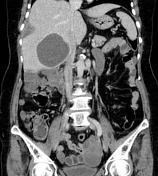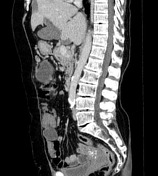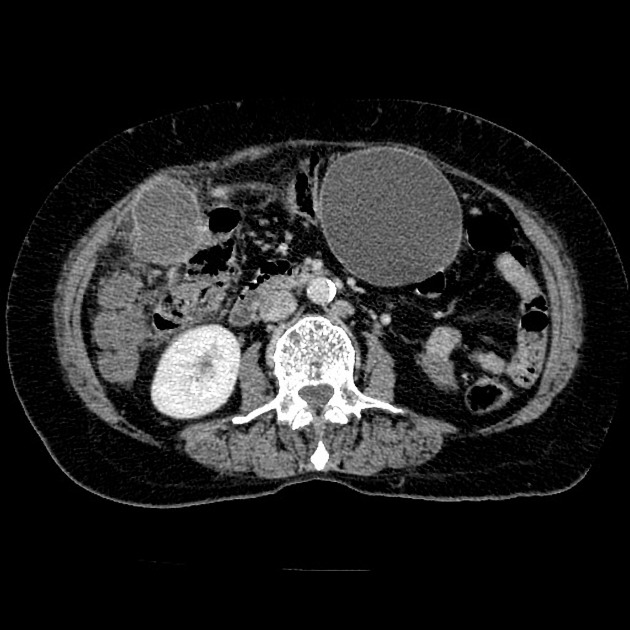Presentation
Concern for hydatid disease.
Patient Data







Hydatid cysts in the liver, spleen, peritoneum, and retroperitoneum.
Liver disease: A large cyst in the anterior right hepatic lobe measures 7 x 7.7 cm, and contains fat, indicating communication with the biliary tree. Multiple small adjacent cysts along the anterior margin. Large, relatively simple cyst with mildly thickened wall in the inferior right hepatic lobe, measuring 8.1 x 8.0 cm.
The cyst along the periphery of hepatic segment 7 and 5 likely ruptured and is relatively small in size conforming to the shape of the liver margin, and may account for the right pleural effusion. Several other cysts projecting along the inferior aspect of the right and left hepatic lobes.
Cyst projecting inferiorly from the right hepatic lobe into the paracolic gutter has ruptured, evidenced by stranding and discontinuity/irregularity along the inferior aspect. It has a floating membrane and small amount of fat.
Numerous small cystic structures throughout the remainder of the abdomen along the expected location of the omentum, indicating peritoneal spread of disease. There are a few coarse calcifications in the peritoneum.
Cysts within the pelvis surrounding the uterus and adnexa. Several cysts in the left retroperitoneum adjacent to the descending colon and inferior to the left kidney. Several cysts within the medial aspect of the spleen.
Case Discussion
Extensive hydatid disease of the abdomen.
When humans are infected through contact with an infected animal or ingestion of contaminated vegetables or water, the oncosphere/embryo passes through the intestinal wall and into the portal circulation, most commonly resulting in hepatic hydatid disease.
This patient likely started with hepatic disease which perforated and seeded into the peritoneum, evidenced by hepatic cyst rupture.




 Unable to process the form. Check for errors and try again.
Unable to process the form. Check for errors and try again.